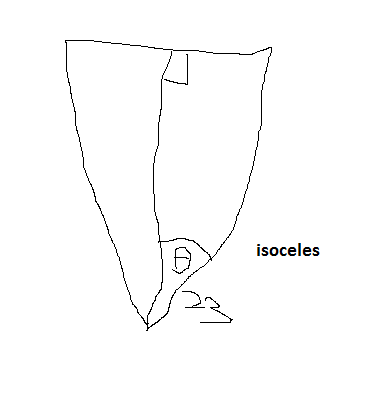|
Size: 702
Comment: 50mm working
|
Size: 1370
Comment: all calculations for landscape mode
|
| Deletions are marked like this. | Additions are marked like this. |
| Line 16: | Line 16: |
| = Working = | = Working in landscape orientation = |
| Line 18: | Line 18: |
| For a 50mm lens: | == For a 50mm lens == |
| Line 21: | Line 21: |
{{attachment:50mm_triangle.png}} |
|
| Line 34: | Line 36: |
| I don't think this is correct... | '''4.3 metres''' My mathematical gut feeling says this is wrong... but it seems about right when I hold the 50mm up to my eye. == 70mm lens == {{{ theta = 17 degrees working distance = 180 / tan(17) = 180 / 0.306 = 588cm }}} '''5.9 metres''' == 135mm lens == {{{ theta = 9 degrees working distance = 180 / tan(9) = 180 / 0.158 = 1136cm }}} '''11.3 metres''' == 200mm lens == {{{ theta = 6 degrees working distance = 180 / tan(6) = 180 / 0.105 = 1712cm }}} '''17.1 metres''' |
Stats for a full-frame 35mm camera, taken from lens manufacturers' spec sheets.
- 50mm = 46 degrees
- 70mm = 34 degrees
- 135mm = 18 degrees
- 200mm = 12 degrees
Now, those are presumably across a circular diameter (ie. the diagonal of a frame).
For a 3m wide backdrop, your hypotenuse in 3:2 aspect ratio is sqrt(13), or 3.6m.
Now use some trig to convert those angles into 3.6m.
Working in landscape orientation
For a 50mm lens
- theta = 23 degrees
- Opposite = 180cm

tan(23 degrees) = 180 / working distance 0.42 = 180 / working distance 1/0.42 = working distance / 180 180/0.42 = working distance working distance = 428cm?
4.3 metres
My mathematical gut feeling says this is wrong... but it seems about right when I hold the 50mm up to my eye.
70mm lens
theta = 17 degrees
working distance = 180 / tan(17)
= 180 / 0.306
= 588cm5.9 metres
135mm lens
theta = 9 degrees
working distance = 180 / tan(9)
= 180 / 0.158
= 1136cm11.3 metres
200mm lens
theta = 6 degrees
working distance = 180 / tan(6)
= 180 / 0.105
= 1712cm17.1 metres